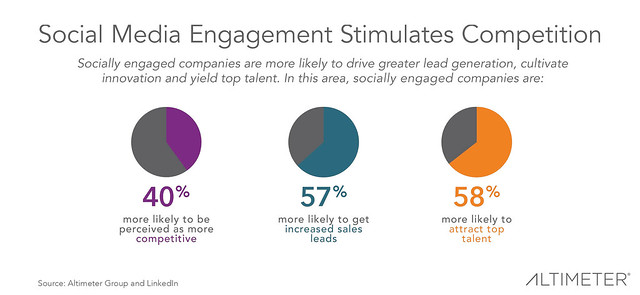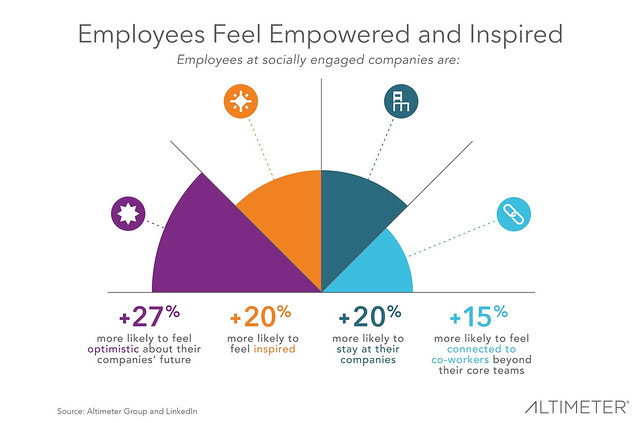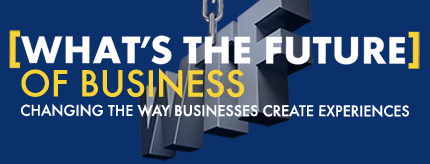In a late 2013 study, Gallup found that only 13% of workers actually feel engaged at their jobs. What’s worse is that 63% of the workforce is not engaged at all. But wait, the news gets even more disheartening. An astounding 24%, one-quarter of the global workforce, is actively disengaged right now. Essentially we have a significant number of workers doing their best impression of corporate zombies who go through the everyday motions to collect a paycheck.
So are employees to blame?
Nope.
This incredible set of findings falls squarely on management or the lack thereof. What’s missing? Employee leadership and engagement.
The economic impact of passive engagement and complete disengagement is potentially devastating on the horizon. And right now, it’s only building momentum, reducing profitability and eroding morale every day. While I’ve not researched the expected losses businesses should expect as a result of this shocking news, I have researched the benefits of actively engaging employees. Believe it or not, doing so carries a notable impact on relationships and the bottom line. That data is available here.
I partnered with LinkedIn to lead a research project that could put weight behind dedicated employee engagement programs while also demonstrating the business upside in doing so. In 2013 and 2014, along with LinkedIn, we surveyed thousands of workers about their company’s employee engagement practices. The study was also informed by another project we worked on together during this time that examined the top 100 “socially engaged” companies that use the LinkedIn platform successfully for engaging employees and employee prospects. The list of “The Top 25 Socially Engaged Companies” was published earlier this year by LinkedIn.
To better understand the benefits of employee engagement, we hosted both qualitative and quantitative studies with employees of socially engaged companies and also those that were further down the list or not on the list at all. Our goal was to learn what the most socially engaged companies on LinkedIn did differently and also how employees felt about current engagement programs and their resulting benefits. We also surveyed employees outside of the control group to compare responses.
The result was a telling report, Relationship Economics: How genuine communication and engagement in social media helps businesses grow relationships with employees and customers while improving the bottom line. At a minimum we found that active employee engagement works. But you already knew that right?
While it might seem logical or even commonsensical, Gallup’s numbers demonstrate that businesses are missing or ignoring potentially costly opportunities right now.
In our research, we learned right away that socially engaged companies are more likely to drive greater lead generation, cultivate innovation, and yield top talent.
For example, we found that 57% of socially engaged companies are more likely to attract great talent (41% of the target group vs. 26% of the control group). And 40% are more likely to believe their company is more competitive. That’s not all however. In a war for top talent, socially engaged companies are 58% more likely to attract ideal candidates.
The benefits don’t end there however. Employees at socially engaged companies are more likely to be inspired and optimistic about their company.
In a time when culture eats strategy for breakfast, employees at socially engaged companies are also 20% more likely to feel inspired at their job. More so, 27% are more likely to be optimistic about the future of their organization.
The numbers only continue to reinforce the obvious; employee engagement is the foundation for leadership and business success.
What we took away from this research is that the most socially engaged businesses are learning that intentional communication, social content and community strategies work. They do so by informing and empowering internal and external stakeholders by creating productive communities where like-minded professionals connect to share information, collaborate, solve problems and also create opportunities.
This isn’t about using social media platforms, which so many companies are doing. This is about what you do with those platforms. Socially engaged companies are genuinely more open, communicative, and also open to listening and learning in real time. They are leading the way for a new social era of business transformation, where trust becomes a metric and relationships offer economic value.
To do so however, takes intention and an infrastructure for active social engagement and communication. As they say, a happy employee makes a happy customer. With one quarter of employees actively disengaged, we can only do better. But, we have to want to improve employee morale and confidence and that starts with admitting there’s a problem today.
Download the report here.
Connect with me…
Twitter | LinkedIn | Facebook | Youtube | Instagram | Pinterest
Image Credit: Shutterstock










I have been a vocal advocate of employee use of social media for many years — I even started a blog about six or seven years ago dedicated to providing resources to support and end to corporate blocking of social media. I’ve been involved in implementing social media advocacy programs for employees in companies, and I tout research like the McKinsey institute study from 2012 that found a 25% productivity increase from employees using social media both internally and externally. So naturally, I’m a big supporter of this study.
That said, I wouldn’t want any company leaders to get the impression that having employees engage in social media — even if they follow the steps outlined in the report — is an engagement-building panacea. Looking at the 25 companies listed as the most socially-engaged, I have no doubt they also have cultures that support higher levels of engagement. Are employees of these companies more engaged because they engage in these channels, or is the opportunity to engage in these channels enabled by cultures that inherently support high levels of engagement? (In other words, did the chicken or the egg come first?)
We know what leads to large populations of engaged employees from decades of research by hundreds of institutions. Connecting employees through social channels and ignoring the other dimensions that factor into engagement would be a mistake on multiple levels.
It’s especially important to remember that employees experience their companies through their membership in work teams, project teams, and the employee-supervisor relationship. Context is critical; it’s not enough to explain an issue to employees; they need to understand it through one or more of these three filters (in other words, “What does this have to do with me?”
Internal collaborative workspaces like Yammer and Chatter can be employed as tools to support this, but only if the culture supports open employee discussion; these channels also need to have been introduced with as much focus on adoption as the usual attention we give to deployment.
From an internal perspective, the introduction (or rehabilitation) of social networks needs to be considered as part of an effort to build emotional and social capital as much as it is a means of improving access to relevant information and content.
And, of course, all of this without an equally committed focus on the other building blocks of engagement won’t produce a more engaged workforce. Imagine connecting a large population of actively disengaged employees with customers through social media! Down that road lies only madness…
While leadership is in charge of driving employee engagement programs, the responsibility doesn’t need to fall entirely on their shoulders to keep them running. Leadership can implement a peer-managed program where employees are motivated to recognize and reward one another. I provide some tips for this in my most recent piece published in Switch and Shift. Check it out: http://switchandshift.com/5-ways-to-ditch-top-down-recognition-for-a-more-personal-approach
To get better results of social media campaign we must engage our employees into it to get more engagement because these are the people who serve customers and work fro them. So to add value and spread the word we must consider them first.
Interesting interpretations. While my common sense says this is possibly right, I still do not see the idea of generalising the findings. It will help us readers to understand better the criteria for the selection of the 25 companies. The list conspicuously consists of Software companies mostly (a few, less than the digits of your right hand are from other industries like media etc.). But on the other hand, in any of the list of successful companies, we are not seeing these companies. Take Forbes list or Fortune list or any other for that matter.
The best way to understand the report will be after considering the basis of selection of sample, the criteria for exclusions if any and the true data that was collected rather than just plain inferences.
But like I said earlier, I do not doubt the fact that employee engagement is important. I am only worried that there may be more in the data that was collected than to simply push the employee engagement agenda.
LinkedIn’s Talent Trend’s 2014 Report shows that only 15% of people are satisfied with their work! More than 70% of people appear to be barely engaged with their full time employment, according to LinkedIn’s research.
After reviewing the Talent Trends for 2014, I am inspired to focus 2015 on getting deeper to the roots of this issue and pushing this metric from 15% to 50% satisfaction of employment. Satisfaction is a by-product of productive engagement.
Love this quote, Brian, “employees at socially engaged companies are also 20% more likely to feel inspired at their job. More so, 27% are more likely to be optimistic about the future of their organization.”
Thanks for sharing!
thank you sierra. so happy to know you!
ditto! Looking forward to seeing you again soon!
I’ve been a big believer of this for 20 years. I used double sided thank you cards at IBM and I even created a business to solve it.
Daily, positive, peer recognition. http://wooboard.com
The interesting thing is that positive recognition must come from peers. If it just comes from the management then it diminishes in value, just like an employee of the month program slowly loses appeal.
I truly agree with the article. It is really important to communicate with who you work with and it adds power to your work.
I am working at a small advertising agency, and not only our working environment is engaging, but our culture is also very supportive for closer relationship with each other.
So we go beyond social engagement and we are like family members. Not just working 9 to 6, all office members truly cares about company’s profit, and working like it’s their own business.
These members inspire each other and motivate each other.
Here, we are talking about social engagement with co-workers but deep down the social connection, maybe we are talking about becoming closer with each other at work.
Its necessary to empower employees in order to provide better customer relationship management because these are the people who serve customers, and if company wants to be liked by its customers, let the employees love it first.
As a lifelong sales and customer relations professional, I believe there is NOTHING more important to an organization than its customers, without whom there would be no employees.
Getting that out of the way, I believe this article is “spot-on” in it’s central theme. Employees who are empowered and inspired will be engaged and emotionally healthy. These engaged and emotionally healthy employees will accomplish the organization’s best work and account for the greatest customer retention because of the work they do both internally with peers and externally with clients.
There are many ways to empower and inspire your employees, but one of the best is to show them you value their ideas and innovations by offering a forum that makes it easy for them to ideate and collaborate while also providing the tools the management team needs to acknowledge, review, recognize and implement employee suggestions and innovations. Such a tool provides transparency so all ideas can see the light of day and get a fair review which levels the playing field for employees who work in silos that have become “no zones” because of overwhelmed or fearful management versus employees working for more innovative bosses who view their role as empowering employees to innovate.
We recently wrote an article on 4 trends in employee engagement that are picking up steam in 2014: https://www.vocoli.com/blog/november-2014/2015-employee-engagement-trends/
We know that customer satisfaction is the key of a business success. This is the era of customer relationship management and a happy and satisfies customer is the ambassador of our product without any cost but it doesn’t mean that employees are less important. Could anybody let me know about that which one coming fist in the organization employee or customers? Even the best companies are in a trying to priorities their knowledge workers to construct good relationship with their customers. Because, we know that without employees, there are no customers for our products. However, it is also true that both are necessary for the development of any business. But if our employees are not empowered and satisfied, ultimately our customers will not be treated well. So it is cleared that the success key is to engage employees and employees will engage with customers to make long term relationship. According to Guy Herrington and Wendy Lomax, there is a direct relationship between employee satisfaction and customer’s purchase intention. Douglas Hanna, CEO Small Orange, arguing in his post that employee satisfaction is a key to exemplary customer service. For transformational growth of employee, it is important to motivate them by acknowledging and respect. This motivation and admiration provide them confidence, loyalty and dedication. Empowerment or MBO will best work when we assure our knowledge worker that he or she is the real asset for the organization. A well motivated human capital is more loyal for the organization and will be able to work hard for the growth of business. If we want to transform the growth of our knowledge worker we should put them first and customer second. We must take care of our knowledge worker and in return they will take care of our customers who are the fundamental king of our business.
Zulfiqar Ali MSBA from VU Pakistan